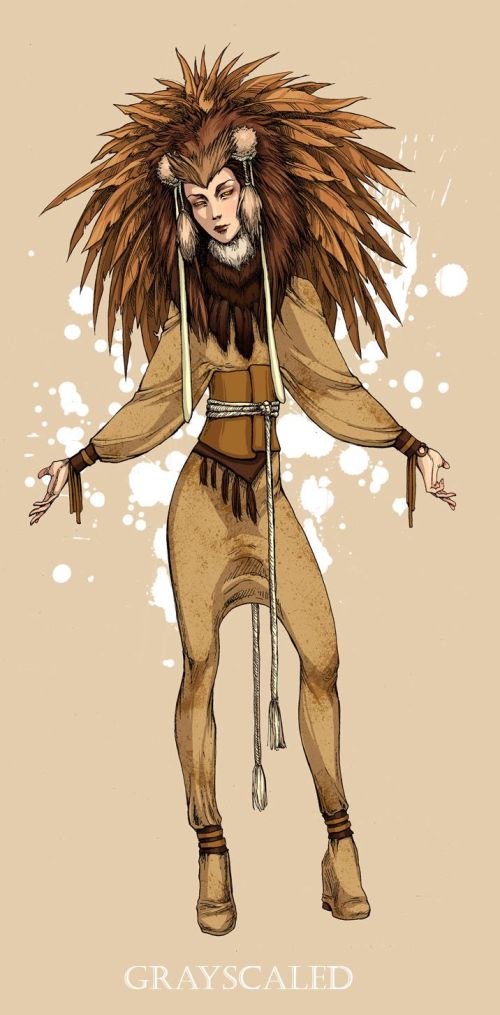
Previous parts of the series can be read here (Part I) and here (Part II)


Ever wonder why The Lady of the Green Kirtle — also known as The Green Witch — seems to have little sprigs of greenery decorating her gown and hair in Pauline Baynes’ illustrations of her?
Well, it’s because of this.

The plant above is Artemisia absinthium, a bushy perennial shrub also known as wormwood. As you can guess by that name, its scent is not pleasant. In fact, it reeks. I know. I’ve grown it. Not only does it reek, it’s extremely bitter, so bitter most animals will not eat it. The plant has many medicinal uses and was also cultivated to flavor spirits and wine. In late 1700s Switzerland it was combined with anise and fennel, and out of this Holy Trinity, the bright green, mind-numbing, alcoholic beverage known as absinthe was born.

Popular in fin-de-siècle France, especially Paris, absinthe was immortalized forever in the impressionist paintings of Manet, van Gogh, and Toulouse-Lautrec. Back then it was traditional to serve absinthe by decanting a portion into a glass, then slowly dripping cold water into it over a cube of sugar held over the glass’s mouth by a small slotted spoon. The sugar alleviated the drink’s bitterness, the water cut its high alcohol content, and the chill brought out in the absinthe a louche — a cloudiness derived from chemicals in the herbs that created a pleasant aroma and refined taste. The woman in the gown holding up up the contraption was the very embodiment of this exotic ritual. She was called The Green Fairy, The Absinthe Fairy, or, sometimes, The Green Witch.

So you see where I am going with this, right?

Green Muse, by Albert Maignan (1895). A poet descends into madness in The Green Fairy’s clutches, even burning his own work in the pot-bellied stove.
Absinthe was a drink embraced by the bohemian crowd, artists and writers who enjoyed its little rituals and the special bars and cafes set up for enjoying it. As the painting above suggests it was also called The Green Muse, said to especially befuddle the senses and cause hallucinations leading the drinker into damnation and death. How much of that evil glamor was debauchery rubbed off by the likes of Rimbaud and Oscar Wilde, the high alcohol content of the drink (90–148 proof!) or toxic additives used by unscrupulous brewers remains to be seen, as modern scientific analysis confirms absinthe is no less addictive or hallucinogenic than any other alcoholic beverage. Nevertheless, the beguiling Green Fairy was blamed.

She was a traitorous mistress, leading drinkers to ruin.
Of course, ordinary folk enjoyed the drink too; it was popular throughout the European continent and even in America, where the likes of Mark Twain and Theodore Roosevelt sampled it, thanks to attractive Art Nouveau posters like these.



It’s hard to say if these green-clad, comely maidens are meant to be physical embodiments of the absinthe drink or just indicators of absinthe’s good times. Many adverts of the Victorian Age featured similar cheesecake even when they were shilling baking chocolate or sewing thread. Note their red or blonde hair, however; Lewis’ Green Witch also had flowing blonde locks.
Another embodiment of absinthe was this Classical, toga-clad lovely who is wearing a crown of artemisia leaves. The plant itself can be seen to the lower right of the Swiss shield.

The Swiss remained the premier manufacturers for absinthe throughout its Golden Age.
I’ve yet to read, in my admittedly shallow, research on Lewis that he took the template of The Green Fairy and used it for his more infamous Lady of the Green Kirtle. But Pauline Baynes, Lewis’ trusted illustrator, certainly did, going by the witch’s anodyne face and flowing gown with its scattered artemisia leaflets… leaflets which are nowhere in the text of The Silver Chair. Lewis had full approval over Baynes’ depictions, so it’s likely he understood, as a child of the early 20th century, the visual reference to absinthe and let it stay.

Pernod advertisement showing artemisia leaves and flowers behind the bottle. Note that it says “Drink responsibly” in French at the bottom.
Absinthe culture and its reputation for death and decadence, crime and social disorder, had so permeated the Western world that by 1905, after a particularly violent murder blamed on absinthe consumption, petitions were circulated to ban it in Switzerland. This inspired another outbreak of Green Fairy depictions, this time showing them as deserving victims (pro-ban) or martyrs (anti-ban.)

This one is against the ban, which would have hurt Swiss distillaries the most and cause a major loss of revenue.
Despite posters like these absinthe was banned from Switzerland in 1908, the constitution even being rewritten to accomodate it. Other countries followed suit. The U.S. banned it in 1912 and France, its biggest market, in 1914. It was the end of an era, the decades afterward only cementing absinthe’s reputation as a poisonous, decadent destroyer of lives.
The perfect drink for Lewis’ Green Witch.

















































